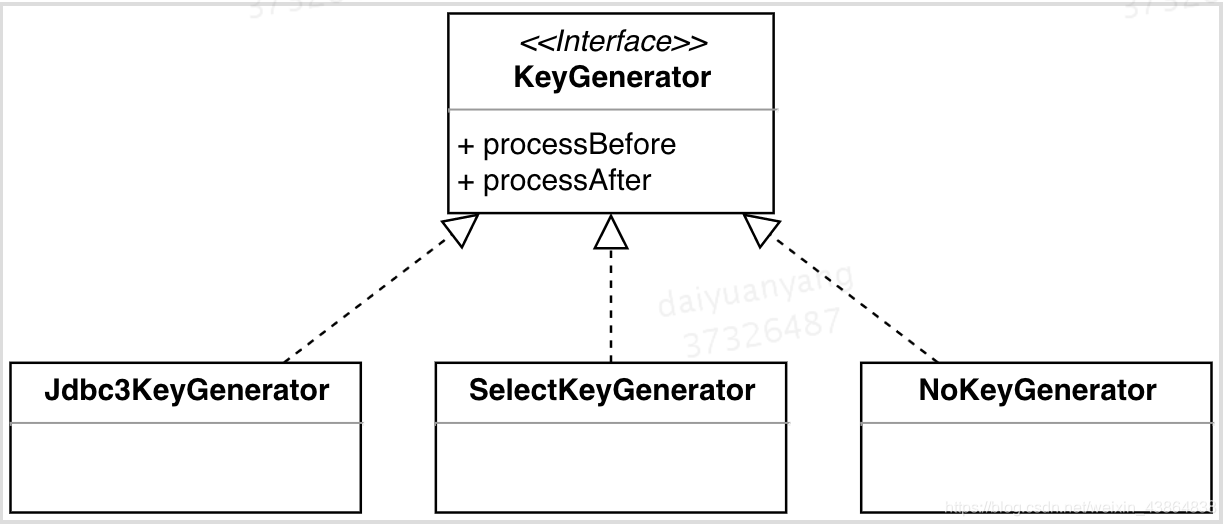insert into on duplicate key update – 返回主键问题
问题 – InsertOrUpdate 会修改内存主键
在项目中,需要批量插入销售记录数据进入 record 表。这张表有自己的唯一键 sale_no 作为唯一标识号。我们需要同步 Mysql 表与 ES 索引,设计成同时双写 mysql 和 es。代码如下
双写逻辑
SQL
insert into record
(column1, column2, ...)
values
(value1, value2, ...)
...
on duplicate key update
column1 = values(values1)
...
private void saveRecords(List<RecordPO> RecordPOList) {
// 1. 这里使用 insert into on duplicate key update SQL 语句批量插入
markableRecordPOUdfMapper.batchInsertReplace(markableRecordPOList);
// 2. 批量更新 ES,转成 ES 类型 PO 再 Bulk
RecordSearch.bulkIndex(RecordIndexConverter.toIndexObjects(markableRecordPOByUniqueSerialNo));
// ......
}
可是出现一个奇怪的现象,每次更新数据表后,es 都会比 mysql 多几个数据。
测试验证
最后排查结果是:batchInsertReplace 方法返回的主键是有问题的,不是真实数据库存储的主键,而是 Mybatis 自己生成的。下面是实验和问题详解。
测试验证
自己造出实验数据,一遍insert一边update,我们预期的是 insert 的PO 赋值出插入数据库的自增主键,update 的 PO 赋值更新的主键。
结果出人意料,插入数据的PO获得主键 115066,UPDATE 的 PO 获得主键居然是 115067(数据库里真实的主键应该是113242,所以只能更新那条记录,却根本没获取到要更新记录的主键)。
所以这个 PO 回填的主键是假的,只是 Mybatis 自增主键 + 1
解决方案
强制走从库反查数据库再读取一遍主键
- 为什么要反查,因为批量插入的健只有在mysql中才能获取到
- 为什么强制走从库?因为刚插入新数据,会有主从延迟
markableRecordPOUdfMapper.batchInsertReplace(markableRecordPOList);
// 用唯一索引强制走从库读取
List<MarkableRecordPO> markableRecordPOByUniqueSerialNo = getRecordPOBySaleSerialNoFromMaster(uniqueSerialNoList);
RecordSearch.bulkIndex(RecordIndexConverter.toIndexObjects(markableRecordPOByUniqueSerialNo));
为什么会出现这个问题,解答要追溯至 Mybatis 自增主键的原理了。
Mybatis 获取主键的原理
useGenerateKey

MyBatis 中 excutor包中的 keyGenerator 负责生产自增主键与回填自增主键。MyBatis 提供了三种实现类,Jdbc3KeyGenerate / SelectKeyGenerator / NoKeyGenerator,在实际使用中,只能生效一种。配置 useGenerateKeys即可开启
<setting_name="useGenerateKeys" value="true">
Jdbc3KeyGenerate 类是给自带主键自增功能的数据库准备的,比如 MySql;SelectKeyGenerator 是给不具备主键自增功能的数据库准备的,比如 Oracle;NoKeyGenerator就是不开启自增主键功能。这篇wiki主要讲Jdbc3KeyGenerate。
Jdbc3KeyGenerate
Jdbc3KeyGenerate,工作原理:Java PO 插入数据库后,将数据库自增产生的 id 读取出来,然后回写给 PO 对象本身。是利用MySql插入数据后反查主键得到自增健,回填入PO。
Jdbc3KeyGenerate
@Override
public void processAfter(Executor executor, MappedStatement ms, Statement stmt, Object parameter) {
processBatch(ms, stmt, getParameters(parameter));
}
public void processBatch(MappedStatement ms, Statement stmt, Collection<Object> parameters) {
ResultSet rs = null;
try {
// 通过调用 mysql.jdbc 获取自增主键结果 rs
rs = stmt.getGeneratedKeys();
// 后续都是分配 rs 回填给 PO 的操作
if (keyProperties != null && rsmd.getColumnCount() >= keyProperties.length) {
for (Object parameter : parameters) {
// ......
populateKeys(rs, metaParam, keyProperties, typeHandlers);
}
}
} catch (Exception e) {
throw new ExecutorException("Error getting generated key or setting result to parameter object. Cause: " + e, e);
} finally {
// ..........
}
}
追朔到 jdbc 的 getGeneratedKeys 方法里
在 mysql.jdbc 的 StatementImpl 类中
public java.sql.ResultSet getGeneratedKeys() throws SQLException {
synchronized (checkClosed().getConnectionMutex()) {
// 。。。。。。
// 这里就是我们 insert on duplicate key 获取自增主键的逻辑了
if (this.batchedGeneratedKeys == null) {
if (this.lastQueryIsOnDupKeyUpdate) {
return this.generatedKeysResults = getGeneratedKeysInternal(1);
}
return this.generatedKeysResults = getGeneratedKeysInternal();
}
// 正常获取自增主键的逻辑,会去反查
Field[] fields = new Field[1];
fields[0] = new Field("", "GENERATED_KEY", Types.BIGINT, 20);
fields[0].setConnection(this.connection);
this.generatedKeysResults = com.mysql.jdbc.ResultSetImpl.getInstance(this.currentCatalog, fields, new RowDataStatic(this.batchedGeneratedKeys),
this.connection, this, false);
return this.generatedKeysResults;
}
}
秘密就隐藏在 getGeneratedKeysInternal 方法里。
代码块
protected ResultSetInternalMethods getGeneratedKeysInternal() throws SQLException {
long numKeys = getLargeUpdateCount();
return getGeneratedKeysInternal(numKeys);
}
protected ResultSetInternalMethods getGeneratedKeysInternal(long numKeys) throws SQLException {
synchronized (checkClosed().getConnectionMutex()) {
// ..........
// 获取最后一个插入的主键
long beginAt = getLastInsertID();
// ..........
if (this.results != null) {
// ......
if ((beginAt != 0 /* BIGINT UNSIGNED can wrap the protocol representation */) && (numKeys > 0)) {
for (int i = 0; i < numKeys; i++) {
// .......
rowSet.add(new ByteArrayRow(row, getExceptionInterceptor()));
// 居然是 自己 ++
beginAt += this.connection.getAutoIncrementIncrement();
}
}
}
com.mysql.jdbc.ResultSetImpl gkRs = com.mysql.jdbc.ResultSetImpl.getInstance(this.currentCatalog, fields, new RowDataStatic(rowSet),
this.connection, this, false);
return gkRs;
}
}
结论
如果是 insertOrUpdate (insert on duplicate key),生成自增主键逻辑是:先查出最后一次插入的主键,记录为 beginAt,之后计算插入行数,逐行 +1 回填自增主键。所以 insertOrUpdate 开启自增主键机制时,会存在Mybatis改变内存里已有主键信息风险,而且这种改变很可能是错误的。
最终结论
INSERT … ON DUPLICATE KEY UPDATE这种方式在更新数据时,会将auto_increment的值加1,这样持续更新并插入时就会导致数据库自增主键id不连续,并且增长很快。
MyBatis中
INSERT … ON DUPLICATE KEY UPDATE 在同时新插入 INSERT 和 UPDATE 更新时,回填在JVM内存中改变 PO 的 主键 id 值是获取最后一个插入键再自增长的。这是 MyBatis 与 jdbc 的问题。
这种主键回填方式并不会影响 MySQL 数据库,只影响内存中的 PO。只要注意使用时,不要用PO的回填主键去做业务逻辑操作,再反查一次即可。